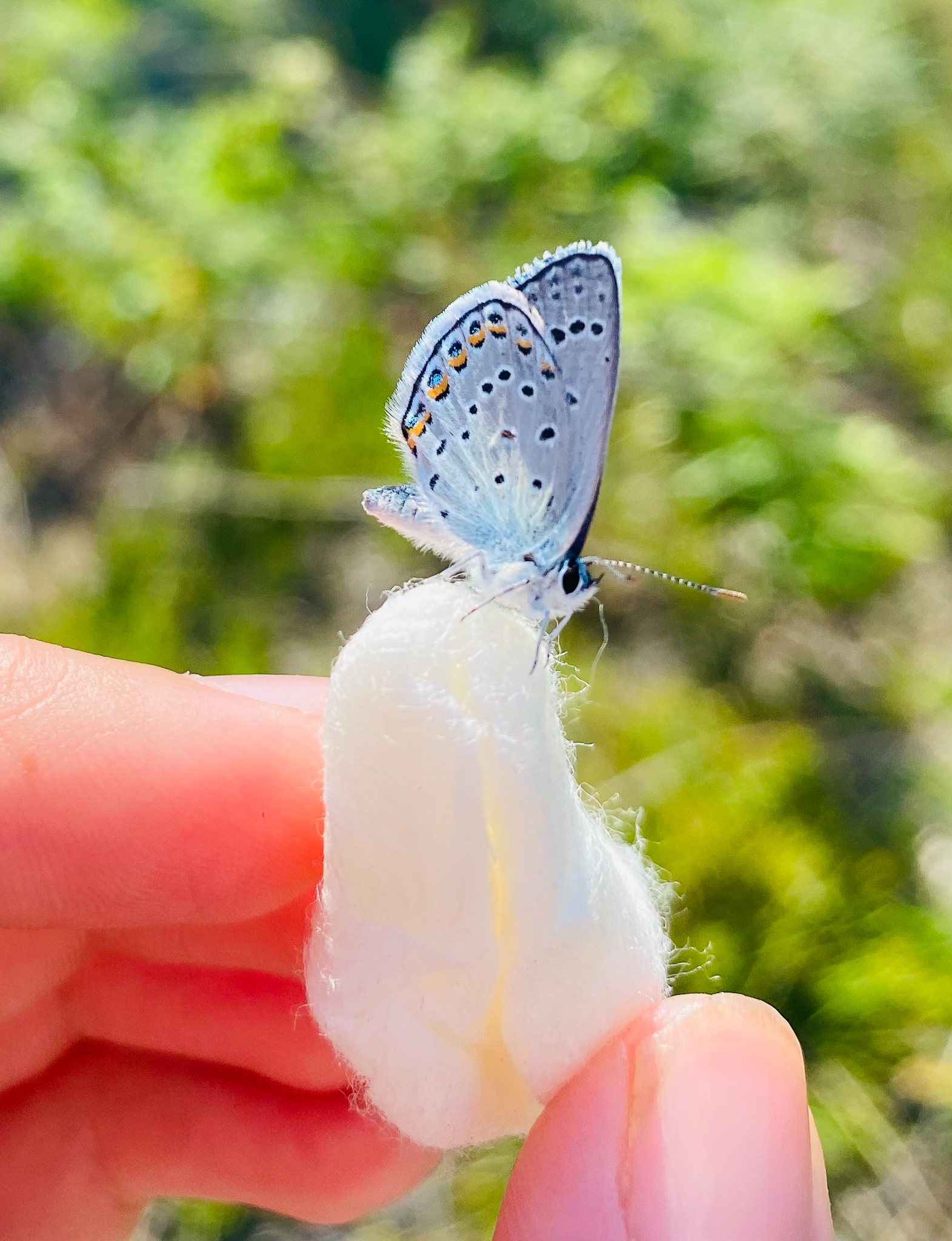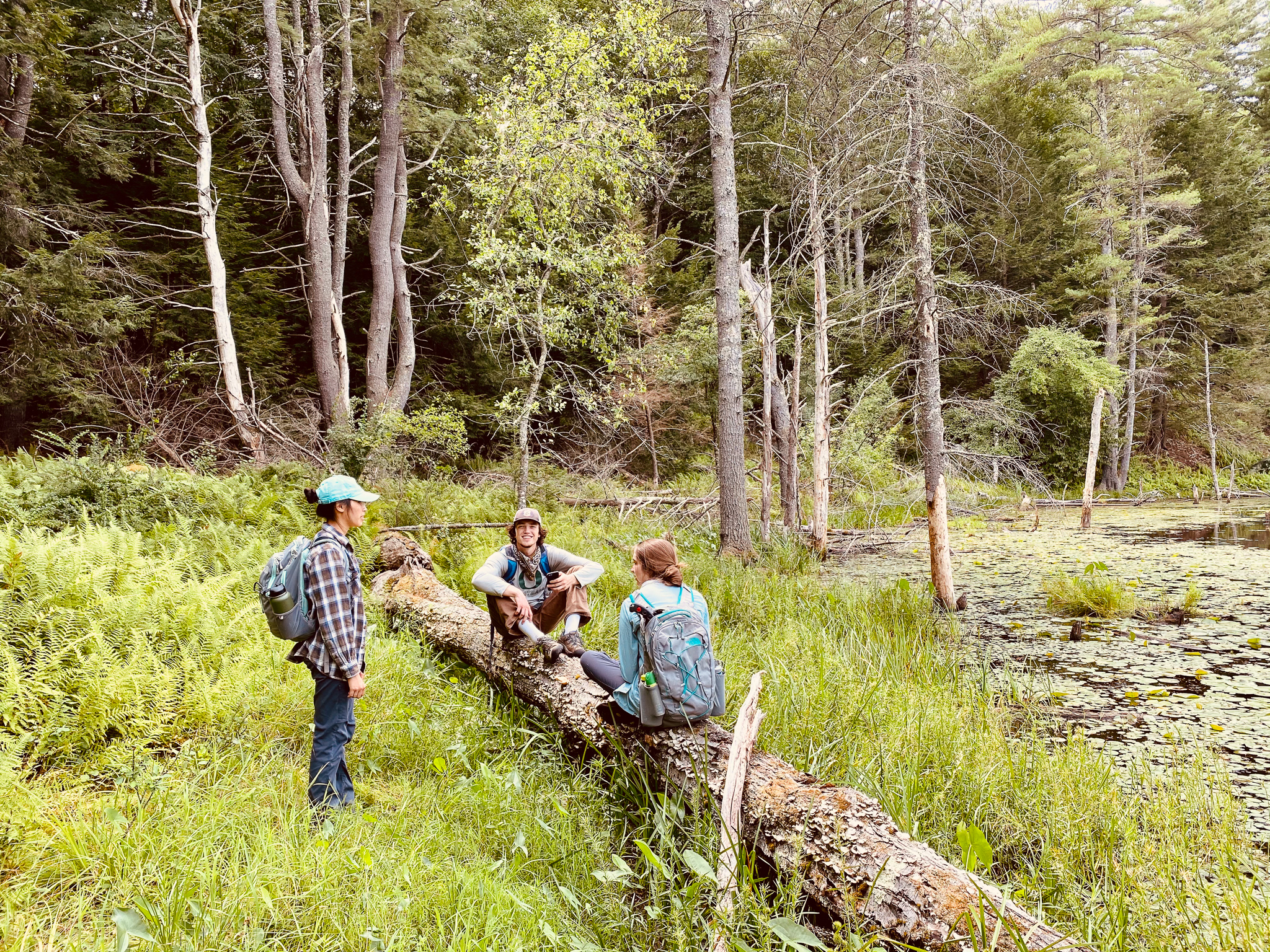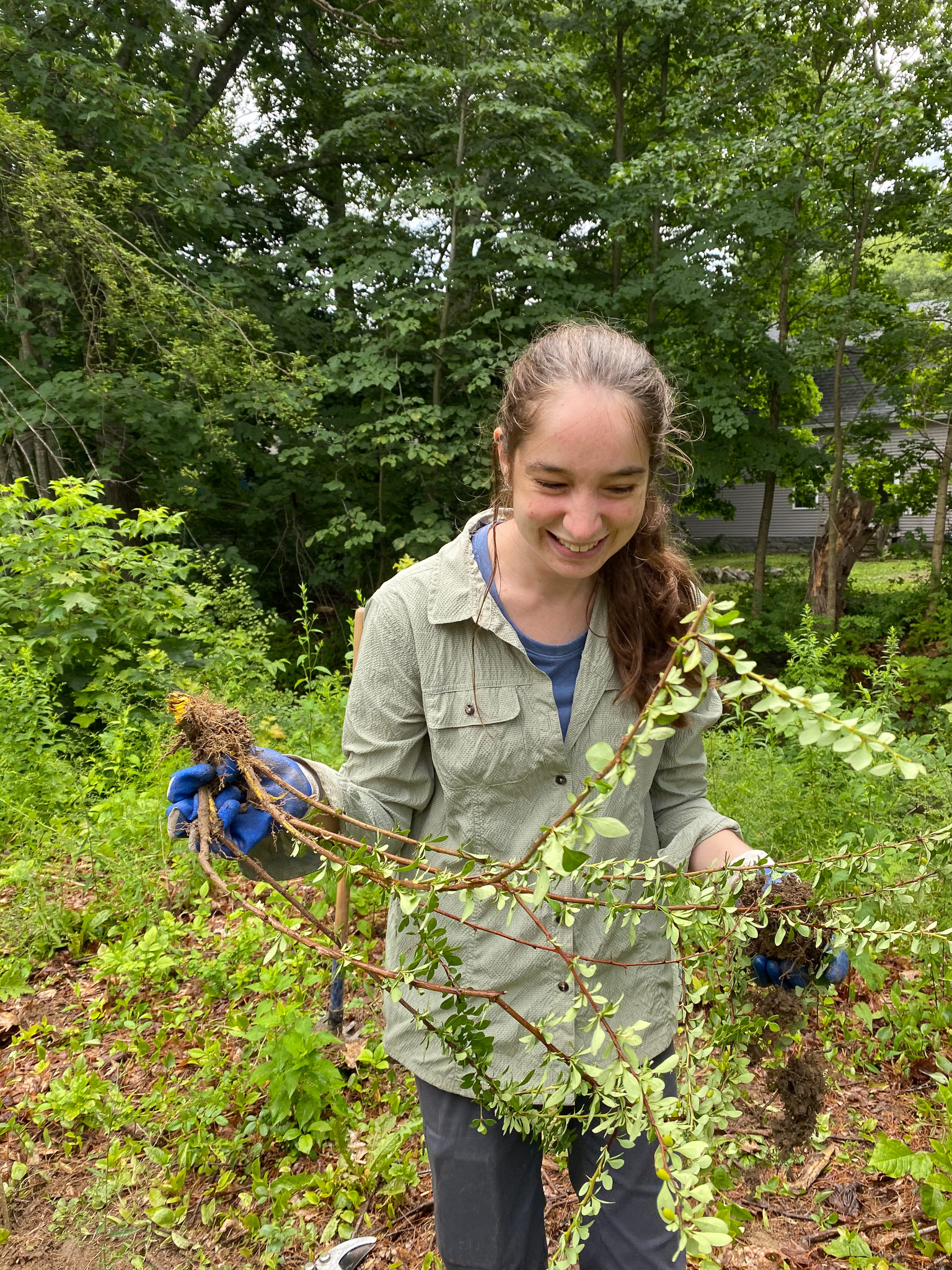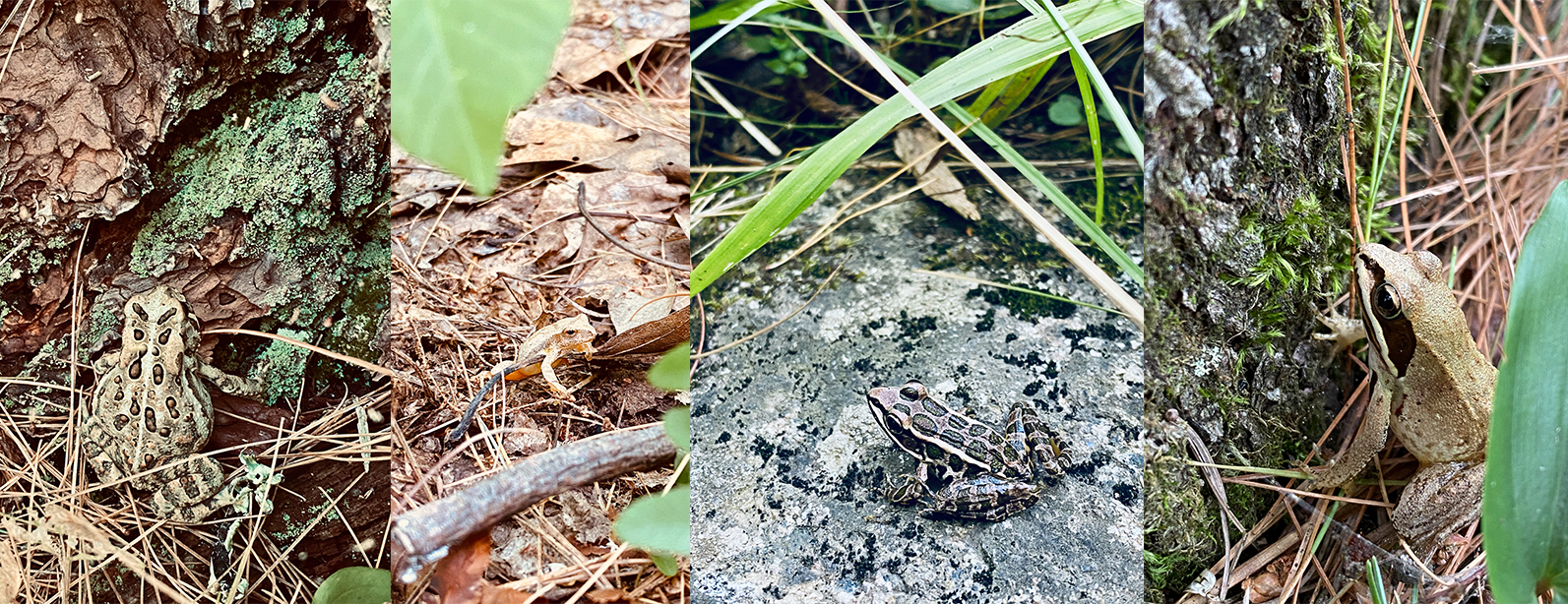Tips for a First Time Nature Groupie
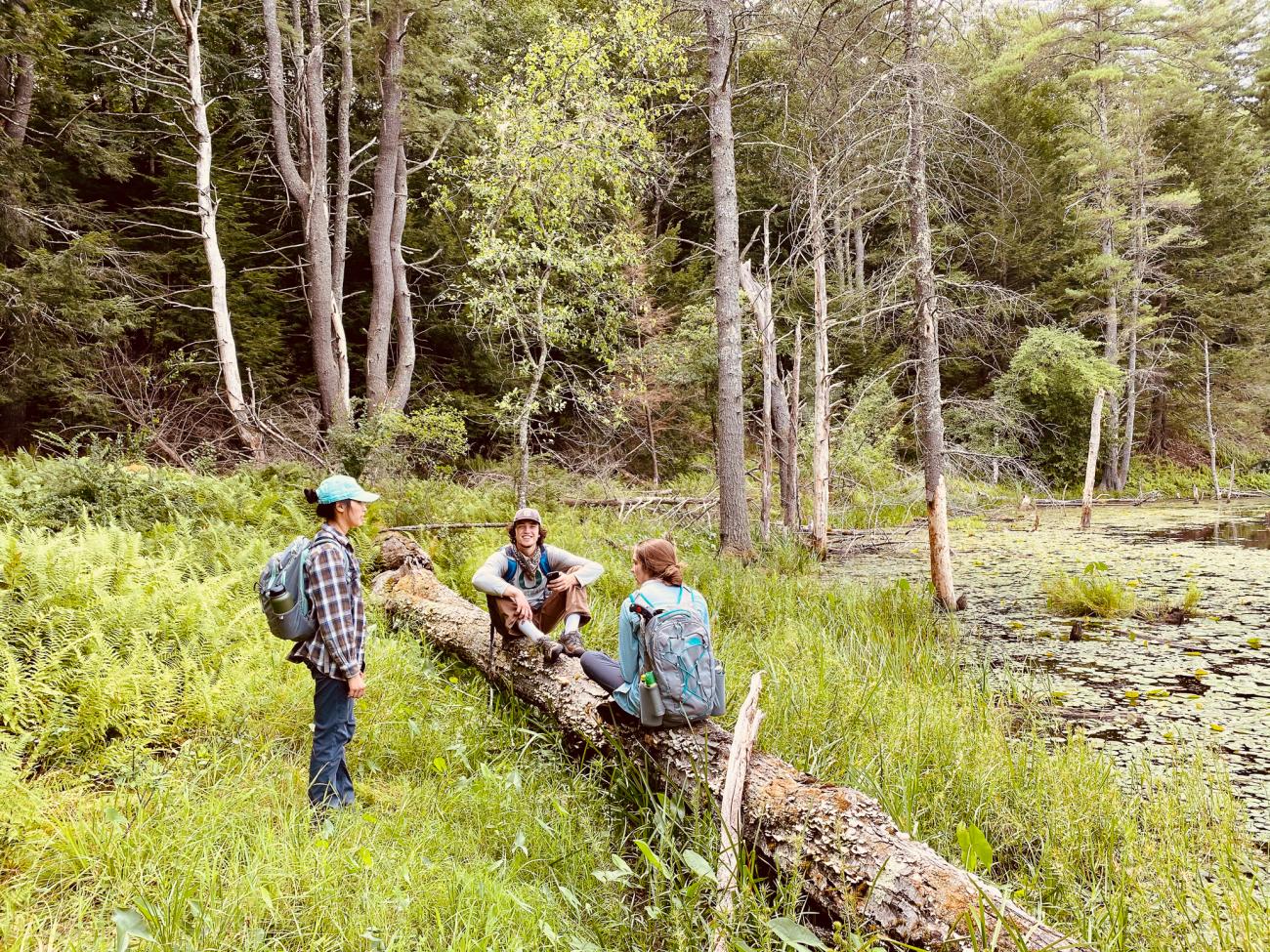
Something just leapt. It was tiny , was it a frog or was it a toad? Who knows? And so went my internal conversation, before I interned with Nature Groupie!
After this summer in the field, I finally learned the difference between amphibians. Along the way I discovered a few tips for anyone just getting into outdoor volunteering:
1. Volunteering for nature comes in all shapes and sizes!
This summer interning with Nature Groupie, I got to work on a new project every week, and appreciate how many different volunteering opportunities are out there! One-week volunteering for nature meant constructing a new trial up Mt. Eleanor with South East Land Trust. The next week it meant caring for endangered Karner Blue Butterflies with NH Fish and Game. It is difficult to overstate how many options are out there. I would encourage outdoor volunteers to get creative. If one volunteer experience isn’t your thing, there are bound to be another dozen that are.
2. Take time to be curious.
Volunteering should be a joyful experience, best relished when you end a day excited about something you’ve learned! Take a moment to pause and inspect the leaf you don’t recognize, identify a butterfly or just breathe in the fresh air. And don’t be afraid to ask your leader about what you are seeing! They are full of knowledge, and have years of experience to share with you.
If you are working alone (as many are due to the pandemic) consider using the inaturalist [https://naturegroupie.org/story/using-inaturalist-getting-know-nature] or seek apps to help solve a mystery and maybe bring back to your group at the end of the day. Below is a photograph of my fellow interns and I taking time to enjoy the nature we were working in and be grateful for the adventures we had.
3. Most volunteer groups make a BIG deal about invasive plants, and with good reason.
Before this summer, I knew invasive plants were bad (they spread rapidly and outcompete native plants) but that is as far as my understanding went. After removing invasives for several weeks, I now understand the real reason. As Ellen Snyder from the town of Durham put it, “We don’t pull invasives for the sake of it. We pull invasives because we want to restore a healthy native plant community.” By removing invasive plants, you can help protect the New Hampshire forests we all love. Participating in a volunteer workday can help you protect our forests and be a fun way to hone your plant ID skills. Here I am helping to restore a native plant community!
4. So really, what is the difference between a frog and a toad?
It turns out there are tell-tale differences between the two. Toads have textured skin, with rough warty-like lumps, whereas frog skin generally appears smooth and moist, even when on land. Frogs also need more moisture than toads, so they don’t stray far from water sources or moist vegetation. Below are a few of my favorite frogs and toads from a summer of field work.
